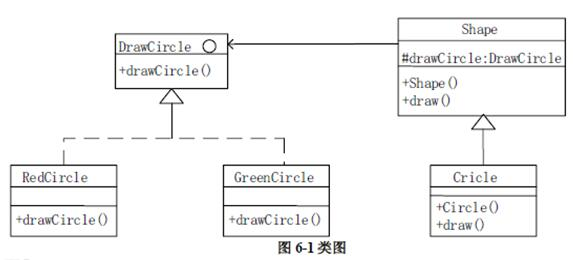下面程序的输出为( )。 public class Test { public static void main (String args[]) { int x,y; x=1; y=2; System.out.println("The output is"+x+y); } }A.The output is xyB.The output is 3C.The output is 12D.The output is x=1 y=2
题目
下面程序的输出为( )。 public class Test { public static void main (String args[]) { int x,y; x=1; y=2; System.out.println("The output is"+x+y); } }
A.The output is xy
B.The output is 3
C.The output is 12
D.The output is x=1 y=2
相似考题
参考答案和解析
解析:Java表达式的同级运算符从左到右进行,括号可以改变优先级。“+”在Java中既是算术的加号,也可以作为字符串的连接符号。“The output is”+x+y中,字符串“The output is”先与x做字符串的连接,结果字符串“The output is 1”再与y做字符串连接。
更多“下面程序的输出为( )。public class Test {public static void main (String args[]) {int x,y;x ”相关问题
-
第1题:
将下面程序补充完整。 includeusing namespace std; class Base{ public: 【 】fun(){r 将下面程序补充完整。
include <iostream>
using namespace std;
class Base{
public:
【 】 fun(){return 0;} //声明虚函数
};
class Derived:public Base{
public:
x,y;
void SetVal(int a,int b){}
int fun(){return x+y;}
};
void 【 】 SetVal(int a,int b){x=a;y=b;} //类Derived成员函数
void main(){
Derived d;
cout<<d.fun()<<endl;
}
正确答案:virtual int Derived::
virtual int Derived:: 解析:virtual int用于声明虚函数;Derived::用于指定类Derived成员函数。 -
第2题:
下面程序输出的结果是( )。 includeusing namespace std; class A{ 下面程序输出的结果是( )。 #include<iostream> using namespace std; class A{ int X; public: A(int x):x(++x){} ~A(){cout<<x;} }; class B:public A{ int y; public: B(int y):A(y),y(y){} ~B(){cout<<y;}; }; void main(){ B b(3); }
A.34
B.43
C.33
D.44
正确答案:A
解析:对象创建的次序为:先基类,后派生类;析构时,先派生类,后基类。 -
第3题:
阅读下列说明和C++代码,填写程序中的空(1)~(6),将解答写入答题纸的对应栏内。
【说明】
以下C++代码实现一个简单绘图工具,绘制不同形状以及不同颜色的图形。部分类及其关系如图6-1所示。

【C++代码】
#include?#include?using?namespace?std;class?DrawCircle?{??????//绘制圆形,抽象类? ? ? public: (1);//定义参数为?int?radius,?int?x,?inty? ?virtual~DrawCircle()?{?}};class?RedCircle:public?DrawCircle?{????//绘制红色圆形? ? ? ? public: void?drawCircle(intradius,?int?x,?int?y)?{cout?<?drawCircle?=?drawCircle;? }? ?virtual~shape()?{?}? public:? ?virtual?void?draw()?=?0;};class?Circle:public?Shape?{????//圆形? ? private:? ? ?int?x,y,radius;? ? public:? Circle(int?x,inty,int?radius,DrawCircle?*drawCircle)? (3)? {? this->x?=?x;? ?this->y?=?y;? ? this->radius?=?radius; }? ? ? public:? void?draw(){? drawCircle?-> (4); }};int?main(){Shape?*redCirclenew?Circle(100,100,10,????(5)????);//绘制红色圆形? Shape?*greenCircle=new?Circle(100,100,10, (6)??);//绘制绿色圆形redCircle >draw();? ?greenCircle?->draw();? ?return?0;}答案:解析:(6)(1)void drawCircle (int radius,int x,int y)
(2)DrawCircle*drawCircle
(3)drawcircle
(4)drawCircle(radius,x,y)
(5)new RedCircle()
(6)new GreenCircle()【解析】
第一空是填接口里面的方法,在接口的实现里面找,可以发现应该填void drawCircle (int radius,int x,int y)。
第二空可以根据后面this drawCircle=drawCircle判断,这里应该有一个drawCircle属性,因此应该填)DrawCircle drawCircle。
第三空这里填drawcircle,用-> drawcircle来引用父类的成员。
第四空调用drawCircle(radius,x,y)方法。
第五、六空分别创建一个红色圆形对象和一个绿色圆形对象作为Circle里面的实参。 -
第4题:
有如下程序: #include<iostream> usingnamespacestd; classTest( public: Test( ){} Test(constTest8Lt){cout<<1;} }; Testfun(Test&u){Testt=U;returnt;} intmain( ){Testx,y;x=fun(y);return0;} 运行这个程序的输出结果是( )。
A.无输出
B.1
C.1l
D.111
正确答案:C
C。【解析】本题调用了fun函数。 -
第5题:
阅读以下说明和Java程序,填写程序中的空(1)~(6),将解答写入答题纸的对应栏内。
【说明】
以下Java代码实现一个简单绘图工具,绘制不同形状以及不同颜色的图形。部分接口、类及其关系如图5-1所示。


【Java代码】
interface?DrawCircle?{? //绘制圆形 public(1) ;}class?RedCircle?implements?DrawCircle?{? ?//绘制红色圆形???????public?void?drawCircle(int?radius,intx,?int?y)??{????????????System.out.println("Drawing?Circle[red,radius:"?+?radius?+",x:"?+?x?+?",y:"?+y+?"]");???????}}class?GreenCircle?implements?DrawCircle?{????//绘制绿色圆形??????public?void?drawCircle(int?radius,?int?x,int?y)?{???????????System.out.println("Drawing?Circle[green,radius:"?+radius+",x:?"?+x+?",y:?"?+y+?"]");??????}}abstract?class?Shape?{????//形状? protected? ? (2)???;? ? public?Shape(DrawCircle?drawCircle)?{? ?this.drawCircle=?drawCircle;? ? ? public?abstract?void?draw();}class?Circle?extends?Shape?{? //圆形? ?private?int?x,y,radius;? public?Circle(int?x,int?y,intradius,DrawCircle?drawCircle)?{? ?(3)???;? this.x?=?x;? ? ? this.y?=?y;? ?this.radius?=radius;? }? ? ?public?void?draw()?{? ? drawCircle.? ?(4)? ?;? ? ? }}public?class?DrawCircleMain?{? public?static?void?main(String[]?args)?{? Shape?redCircle=new?Circle(?100,100,10,? (5) );//绘制红色圆形? Shape?greenCircle=new?Circle(200,200,10,(6) );//绘制绿色圆形? ?redCircle.draw(); greenCircle.draw();? ?}}答案:解析:(1)void drawCircle (int radius,int x,int y)
(2)DrawCircle drawCircle
(3)super.drawcircle=drawcircle
(4)drawCircle(radius,x,y)
(5)new RedCircle()
(6)new GreenCircle()【解析】
第一空是填接口里面的方法,在接口的实现里面找,可以发现应该填void drawCircle (int radius,int x,int y)。
第二空可以根据后面this drawCircle=drawCircle判断,这里应该有一个drawCircle属性,因此应该填)DrawCircle drawCircle。
第三空这里用super,用super. drawcircle来引用父类的成员。
第四空调用drawCircle(radius,x,y)方法。
第五、六空分别创建一个红色圆形对象和一个绿色圆形对象作为Circle里面的实参。 -
第6题:
以下标识符哪些是合法的?哪些是Java的关键字? miles, Test, a++, --a, 4#R, $4, #44, apps,class, public, int, x, y, min value, 成绩, radius,最大值max。
TwoUsers
